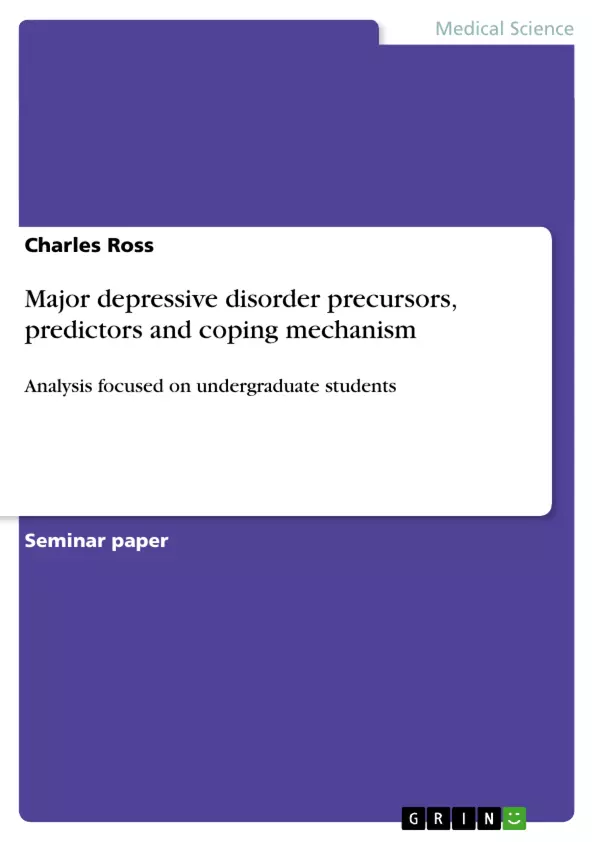Major Depressive Disorders is one of the first disorders to be recognized among humanity. A number of psychologists and psychiatrists have come up with theories and myths that explain the origin of MDD. Ancient Egyptians identified the brain to be the body organ that was in charge of human consciousness (James Herbert, 2009). They believed that brain disorders could be caused by both supernatural factors and also other factors that were within human control. The Old Testament is also one of the earliest evidence of MDD. Examined as literary description of human behavior and society, MDD is described by King David and other author. It is defined as another form of psychological distress. In the earlier days, symptoms associated with MDD as per today’s standards include insomnia, fatigue, sadness and fearfulness. It is quite evident that even in the pre-classical period people had acknowledged conditions similar to MDD (James Herbert, 2009). However, the earliest written record of a medical diagnostic condition similar to MDD was in the classical era. It is the melancholia described by the Hippocrates. Melancholia is a sub set of Major Depressive Disorder but in earlier cases the word melancholia was used in place of MDD. In other parts of the world, melancholia is still used to mean MDD in today’s diagnostics (Seth Disner, 2011).
Inhaltsverzeichnis (Table of Contents)
- Preface
- Introduction
- Research objectives
- Scope of research
Zielsetzung und Themenschwerpunkte (Objectives and Key Themes)
This research aims to investigate the influence of various precursors and predictors of Major Depressive Disorder (MDD) among undergraduate students in the United States. The research focuses on how cognitive functioning, interpersonal relationships, substance abuse, self-efficacy, and maladaptive coping mechanisms contribute to the development of MDD.
- The impact of precursors and predictors of MDD on undergraduate students
- Cognitive functioning as a factor in MDD
- The role of interpersonal relationships in the development of MDD
- Substance abuse and its connection to MDD
- Coping mechanisms and their effectiveness in managing MDD
Zusammenfassung der Kapitel (Chapter Summaries)
The preface of the text provides a historical overview of Major Depressive Disorder (MDD), tracing its roots back to ancient civilizations. It highlights the recognition of depressive symptoms in ancient Egypt and the Old Testament, and emphasizes the evolution of understanding MDD, drawing from Hippocrates' concept of melancholia.
The introduction delves into the prevalence and impact of MDD, outlining the diagnostic criteria and treatment approaches for the disorder. It emphasizes the rising incidence of MDD among undergraduate students and its detrimental effects on academic performance, interpersonal relationships, and overall well-being.
The chapter on research objectives lays out the specific aims of the study. It focuses on investigating the combined effects of cognitive functioning, interpersonal relationships, substance abuse, self-efficacy, and maladaptive coping mechanisms on the development of MDD in a national sample of U.S. college students.
The chapter on the scope of research highlights the importance of early detection and intervention for MDD. It emphasizes the need for school counselors to be equipped with current knowledge and resources to support students experiencing depressive symptoms. The chapter also underscores the potential negative consequences of MDD and the importance of effective coping mechanisms.
Schlüsselwörter (Keywords)
The key terms and concepts explored in this work include: Major Depressive Disorder (MDD), cognitive functioning, interpersonal relationships, substance abuse, self-efficacy, maladaptive coping mechanisms, avoidance coping, undergraduate students, mental health, public health, early detection, intervention, and treatment.
- Quote paper
- Charles Ross (Author), 2011, Major depressive disorder precursors, predictors and coping mechanism, Munich, GRIN Verlag, https://www.grin.com/document/269790



